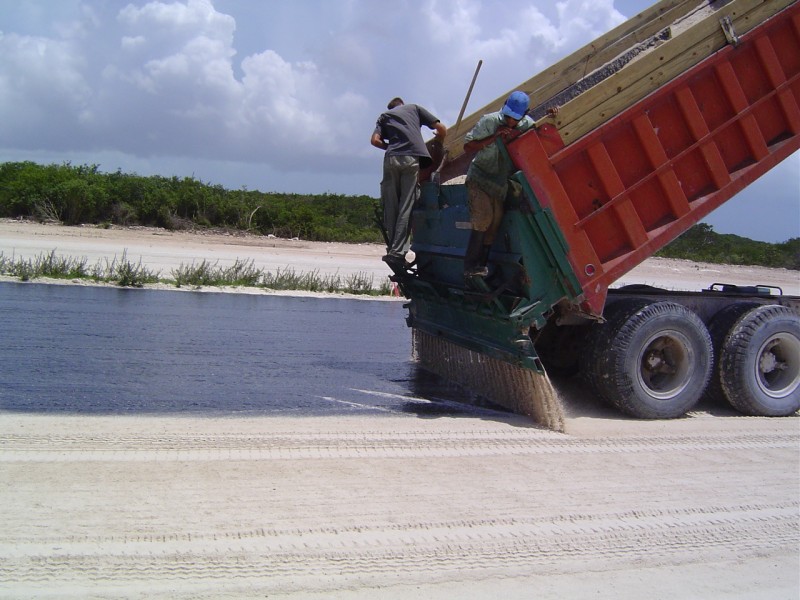Sand Seal

Bitumen Emulsion for Sand Seal
The asphalt surface of the roads can experience erosion, raveling, loss of aggregate,honeycombing, and sulphate attacks over time due to weather conditions such as frost, sunlight, heat, and also road salting, snow removal, as well as the effects of excessive loading and friction, especially caused by tire chains and snowplow blades. Failing to repair and install overlay asphalt in due time will allow damages to expand, leading to complete destruction of the road surface and even the underlying layers. The use of protective layers is recommended to prevent intensification of asphalt wear out, postpone overlay installation, maintain the existing conditions, and fill the cracks.
In addition to providing a suitable road surface, these layers will waterproof it and prevent the destruction of asphalt and its underlying layers. This is a cheap maintenance method that will ensure uninterrupted and secure operation of the roads. Different methods are recommended based on the degree of destruction, the weight and volume of traffic, and type of asphalt. These methods are inexpensive and can be employed early after or even before the beginning of asphalt pavement distress.
Applying a CRS or CSS bitumen emulsion layer with fine aggregates or clean and washed sand.
Sand Seal applications and facts:
- It prevents layers from skidding during vehicle pass.
- It makes the surface smooth and seals the cracks.
- Size of the aggregates must be 6 to 12 mm.
- Sand Seal is very cost effective.
Surface treatment
In terms of installation, it is similar to sealcoating, except that surface treatment should be applied to the base, usually on Binder and Topeka layers, where the bottom layer is thick and the top layer is thin. Before applying the second layer, the loose materials of the first layer must be cleared away using compressed air. The price might vary depending on the spot price of bitumen and other materials, but it is incomparable with hot mix asphalt. It should be noted that the surface layer does not bear any loads, and the weight of vehicles is transferred to the bottom layers.

